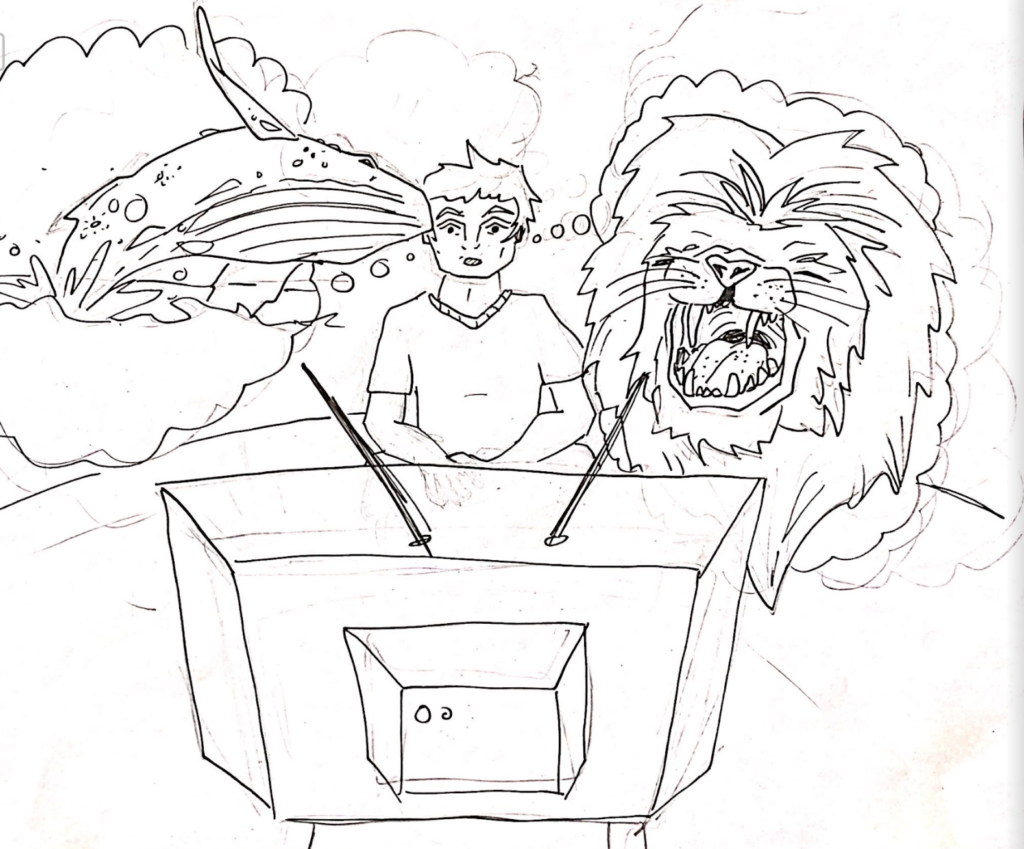For many people, watching cartoons like “Ninjago” or “Dora the Explorer” helped shape and define their childhoods — whether it was to escape reality, have a couple laughs or simply pass time.
Junior Nathan Zhang recalls watching “Wild Kratts, an educational kids’ show featuring different species of exotic animals.
On the surface, the show appears lighthearted and comical. However, Zhang attributes his current understanding of nature to the show, highlighting the profound impact it had on him. The series showcases a new animal each episode, in a format that exhibits action and humor.
Holding a deep and intrinsic love of animals as a child, Zhang spent hours immersed in nature documentaries of all sorts of animals from the tiny army ant to the mighty blue whale. Naturally, this interest gravitated him to enjoy “Wild Kratts,” which served as a creative and fun way to understand how animals interacted with the world.
When asked what his favorite episode was, Zhang struggled to pinpoint a singular episode given the incredible variety of content. Zhang noted that he particularly liked the episode which featured the Dodo bird, as he viewed the exploration of an extinct animal to be thought-provoking and helped him to grasp the ecological effects of humans on the biosphere.
“It sounds mind boggling when I say that a cartoon show has defined who I am as a person, but I also decided to take AP Environmental Science partially due to ‘Wild Kratts,’” Zhang said.
Memories of cartoons from the past
For many teachers, cartoons were also a staple to their childhood. When color screens were invented in 1953, animated cartoons quickly followed suit to become a favorite pastime.“On Saturday mornings there would be television on. You couldn’t just constantly stream whatever you wanted to, so you would just have to wait till cartoons were on,” English teacher Amy Keys said. “My brother and I would play with Legos and watch cartoons, our favorite being ‘Looney Tunes.’”
To many, there is always one memorable cartoon character, detail, or setting that they vividly remember, from small, seemingly insignificant details to important plot points and characters.
Keys described her most memorable character from “Looney Toons” as the roadrunner, who is constantly getting in trouble with Wile E. Coyote. She explained that it was unpredictable how the roadrunner would get out of sticky situations and that he was like a cartoon version of Jason Bourne.
Along with “Looney Toons,” Keys also enjoyed watching “Speedracer,” a Japanese cartoon produced by Tatsuo Yoshida. It was released in 1967, and is part of the rare number of Japanese anime cartoons to find success in America during the ‘60s.
“It was the first Japanese cartoon that I ever heard of. It was about the adventures of a racecar driver and his car,” Keys said.
One element of “Speed Racer” that appealed to Keys was its distinctive art style. She mentioned how the characters were cleverly designed to combine animated characters with human lips.
“What was bizarre about it is that the images were drawn and they were animated, but the lips were photoshopped in,” Keys said. “I think they were real human lips. So it was quite strange looking.”
According to Keys, just because many childhood cartoons seem distant, from a far-gone era, there are still many ways these cartoons can subtly affect a person growing up, from influencing their class choice, to exploring their love of animals.
“All of the media and art that we consume affects us and becomes part of us,” Keys said. “We absorb certain messages about the world, even in fantasy or fictional stories.”


























